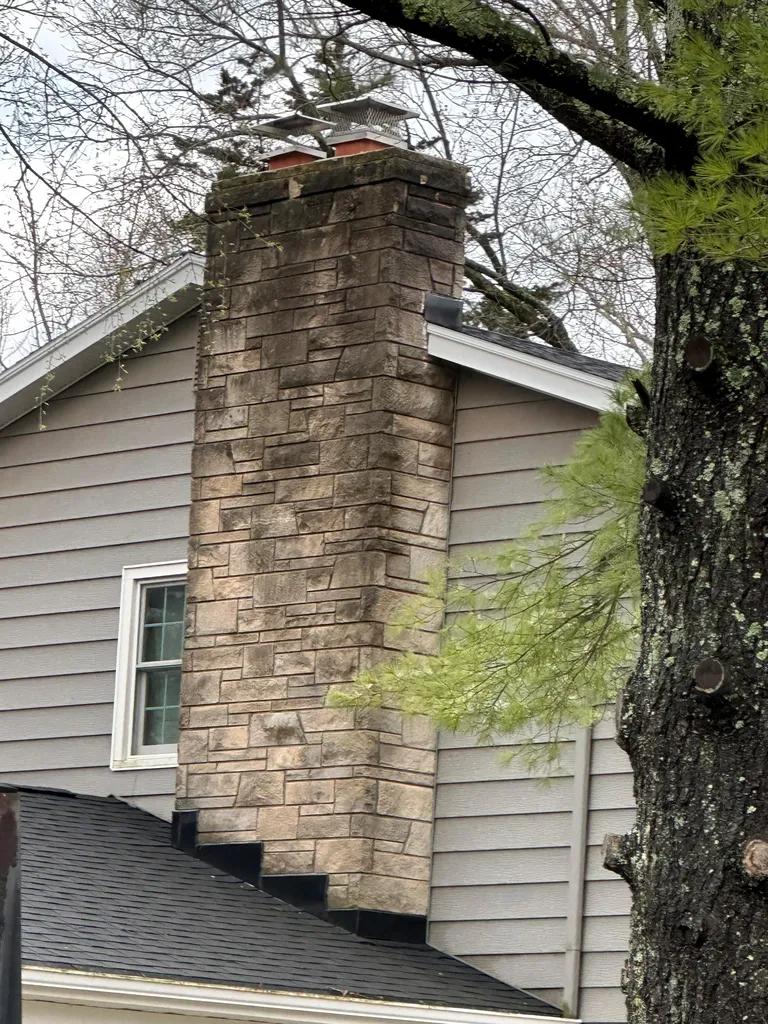Water infiltration can wreak havoc on brick chimneys, leading to deterioration and structural damage. In order to preserve the integrity of your chimney and prevent costly repairs, it is essential to take preventative measures against water infiltration. In this article, we will explore the common causes of water infiltration in brick chimneys and provide practical tips on how to protect your chimney from moisture damage.
Table of Contents
- Identifying Common Causes of Water Infiltration in Brick Chimneys
- Understanding the Importance of Proper Chimney Maintenance
- Implementing Effective Waterproofing Techniques for Long-Term Protection
- Professional Inspection and Repair Services for Severe Water Damage
- Q&A
- The Way Forward

Identifying Common Causes of Water Infiltration in Brick Chimneys
Water infiltration in brick chimneys can lead to serious structural damage if not addressed promptly. By identifying the common causes of water infiltration, homeowners can take preventative measures to protect their chimney and avoid costly repairs.
One common cause of water infiltration in brick chimneys is damaged or missing chimney caps. Chimney caps are designed to prevent water from entering the chimney flue while still allowing smoke to escape. Additionally, deteriorating mortar joints can also contribute to water infiltration. It is important to regularly inspect chimney caps and mortar joints for any signs of wear and tear, and to repair or replace them as needed to maintain the integrity of the chimney structure.

Understanding the Importance of Proper Chimney Maintenance
Water infiltration in brick chimneys can cause serious structural damage over time if not properly addressed. One of the main reasons for water penetration is deterioration of the chimney’s masonry due to exposure to the elements. Cracked mortar joints, spalling brick, and deteriorated flashing can all contribute to water seeping into the chimney and causing further damage.
Proper chimney maintenance is crucial in preventing water infiltration and preserving the integrity of the structure. Regular inspections and repairs can help identify and address potential issues before they escalate. Some important maintenance tasks include repairing cracked mortar joints, replacing spalling bricks, and ensuring that flashing is properly sealed. By taking these proactive measures, homeowners can protect their chimney from water damage and extend its lifespan.

Implementing Effective Waterproofing Techniques for Long-Term Protection
When it comes to preventing water infiltration in brick chimneys, using effective waterproofing techniques is essential for long-term protection. Water can cause serious damage to brick chimneys if not properly addressed, leading to costly repairs and potential safety hazards. By implementing the right waterproofing strategies, homeowners can ensure their brick chimneys remain in top condition for years to come.
One effective waterproofing technique for brick chimneys is applying a quality water repellent sealant. These sealants create a barrier that prevents water from penetrating the brick surface, helping to keep the chimney dry and protected. Additionally, installing a chimney cap can also help prevent water from entering the chimney through the top. Regular inspection and maintenance of the chimney, including checking for cracks and deterioration, can also help identify and address any potential water infiltration issues before they escalate.

Professional Inspection and Repair Services for Severe Water Damage
Brick chimneys are a classic feature of many homes, adding a touch of charm and character. However, they can also be prone to water infiltration, which can lead to serious damage if not addressed promptly. To prevent water from seeping into your brick chimney and causing potential structural issues, it is important to take proactive measures.
One of the best ways to prevent water infiltration in brick chimneys is to ensure that they are properly sealed and maintained. Here are some key steps to take:
- Inspect the chimney regularly for any signs of damage or deterioration.
- Repair any cracks or gaps in the mortar or bricks promptly.
- Apply a water repellent sealant to the chimney to help keep out moisture.
- Install a chimney cap to prevent rainwater from entering the chimney flue.
Q&A
Q: Why is preventing water infiltration in brick chimneys important?
A: Water infiltration can cause damage to the chimney structure, leading to potential safety hazards and costly repairs.
Q: What are common causes of water infiltration in brick chimneys?
A: Common causes include deteriorating mortar joints, cracked bricks, missing or damaged chimney caps, and flashing failure.
Q: How can homeowners prevent water infiltration in their brick chimneys?
A: Homeowners can prevent water infiltration by maintaining the chimney cap, repairing damaged mortar joints, installing proper flashing, and ensuring proper ventilation.
Q: How often should homeowners inspect their brick chimneys for signs of water infiltration?
A: Homeowners should inspect their chimneys at least once a year, preferably before the start of the rainy season.
Q: What are the potential consequences of ignoring water infiltration in brick chimneys?
A: Ignoring water infiltration can lead to mold growth, chimney leaks, structural damage, and even chimney fires.
Q: Are there professional chimney maintenance services available to help prevent water infiltration?
A: Yes, chimney sweeps and masonry professionals can provide inspection, maintenance, and repair services to help prevent water infiltration in brick chimneys.
The Way Forward
In conclusion, preventing water infiltration in brick chimneys is essential to ensuring the structural integrity and longevity of your chimney. By following the steps outlined in this article, such as inspecting and repairing mortar joints, installing a chimney cap, and maintaining proper flashing, you can effectively protect your chimney from water damage. Remember, early detection and prevention are key in avoiding costly repairs in the future. By taking proactive measures to address water infiltration, you can enjoy a safe and functional chimney for years to come. Thank you for reading and may your chimney stay dry and well-maintained.


